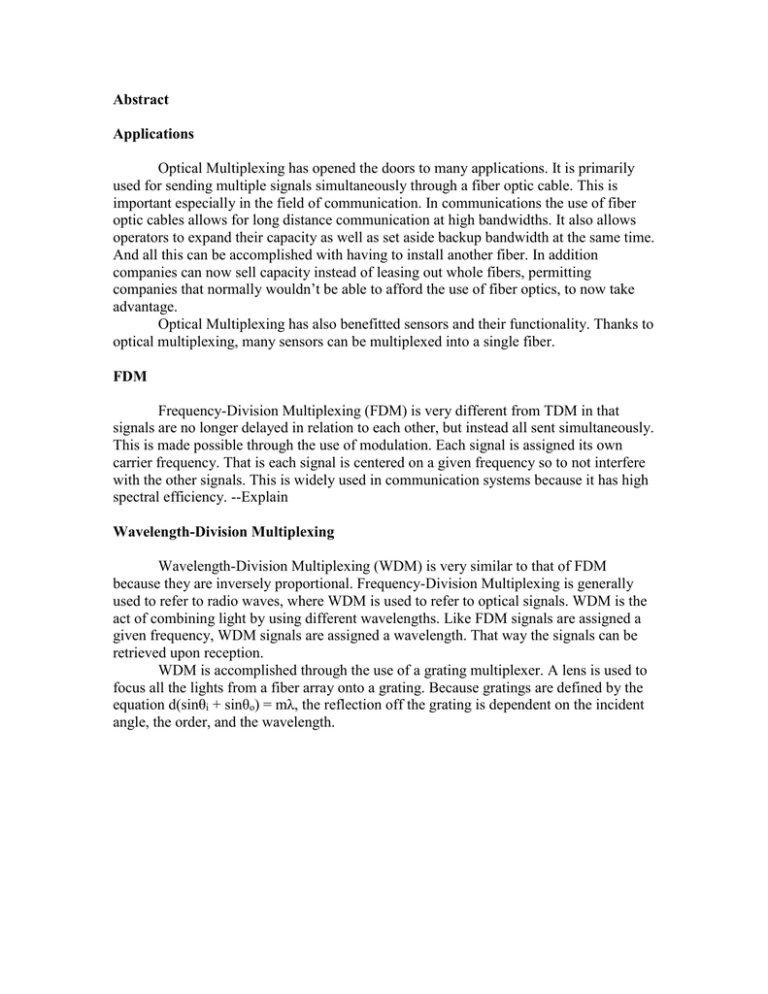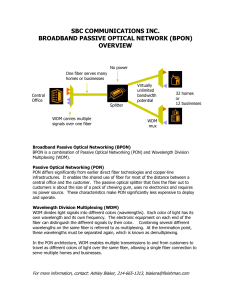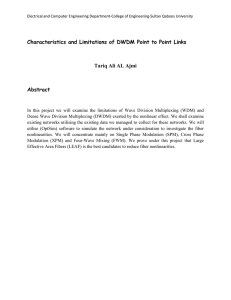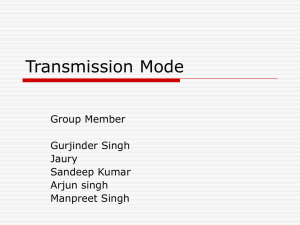Abstract Applications Optical Multiplexing has opened the doors to many applications. It...
advertisement

Abstract Applications Optical Multiplexing has opened the doors to many applications. It is primarily used for sending multiple signals simultaneously through a fiber optic cable. This is important especially in the field of communication. In communications the use of fiber optic cables allows for long distance communication at high bandwidths. It also allows operators to expand their capacity as well as set aside backup bandwidth at the same time. And all this can be accomplished with having to install another fiber. In addition companies can now sell capacity instead of leasing out whole fibers, permitting companies that normally wouldn’t be able to afford the use of fiber optics, to now take advantage. Optical Multiplexing has also benefitted sensors and their functionality. Thanks to optical multiplexing, many sensors can be multiplexed into a single fiber. FDM Frequency-Division Multiplexing (FDM) is very different from TDM in that signals are no longer delayed in relation to each other, but instead all sent simultaneously. This is made possible through the use of modulation. Each signal is assigned its own carrier frequency. That is each signal is centered on a given frequency so to not interfere with the other signals. This is widely used in communication systems because it has high spectral efficiency. --Explain Wavelength-Division Multiplexing Wavelength-Division Multiplexing (WDM) is very similar to that of FDM because they are inversely proportional. Frequency-Division Multiplexing is generally used to refer to radio waves, where WDM is used to refer to optical signals. WDM is the act of combining light by using different wavelengths. Like FDM signals are assigned a given frequency, WDM signals are assigned a wavelength. That way the signals can be retrieved upon reception. WDM is accomplished through the use of a grating multiplexer. A lens is used to focus all the lights from a fiber array onto a grating. Because gratings are defined by the equation d(sinθi + sinθo) = mλ, the reflection off the grating is dependent on the incident angle, the order, and the wavelength. The multiplexer uses the properties of the grating to combine all the light signals into one signal. The relationship between each signals assigned carrier wavelength and the incident angle at which it is hitting the grating is designed in such a way that all the signals are reflected into one signal. Relevance to ECE 476 material





